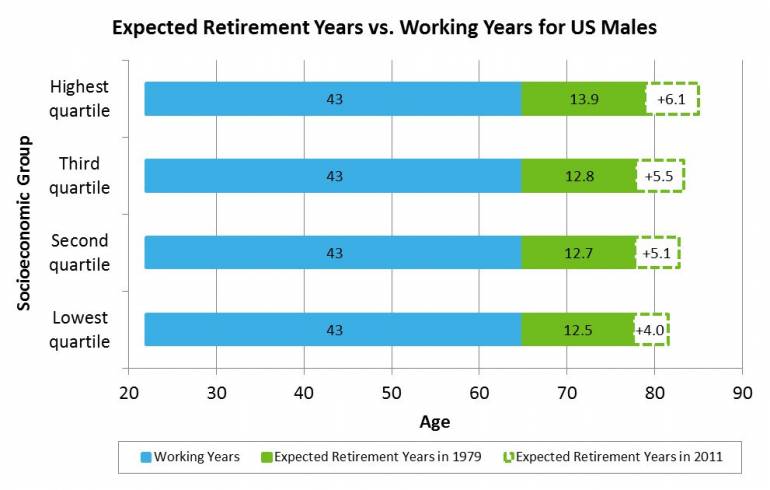Rising life expectancies have led policymakers to prompt people to work more years, to better fund longer retirements. In particular, the normal retirement age for both Old Age Security in Canada and U.S. Social Security will gradually increase from 65 to 67 in the coming years. The U.K. has announced similar plans, and intends additional increases based on future improvements in life expectancy.
But retirement policies that treat all workers the same miss a key point, according to recent research from the Center for Retirement Research (CCR) at Boston College: while life expectancy has improved for people in all socioeconomic groups, some have seen higher gains than others.
he CCR research examined gains in U.S. life expectancy between 1979 and 2011 for people in different socioeconomic groups. According to the findings, life expectancy for males at age 65 improved by more than six years (or 44%) in the highest socioeconomic quartile, but by just four years (or 32%) in the lowest quartile. This means that a two-year increase in retirement age offsets half the increase for the lowest socioeconomic quartile over the past 30 years but only one-third of the increase for the highest quartile.

Interestingly, recent research from Club Vita suggests that an inverse trend has started to take shape in the U.K., with life expectancies improving faster for lower socioeconomic groups over the past 10 years. Clearly, further research is needed to better understand the relationship between socioeconomic factors and life expectancy, and how these can be used to design more equitable retirement programs.




